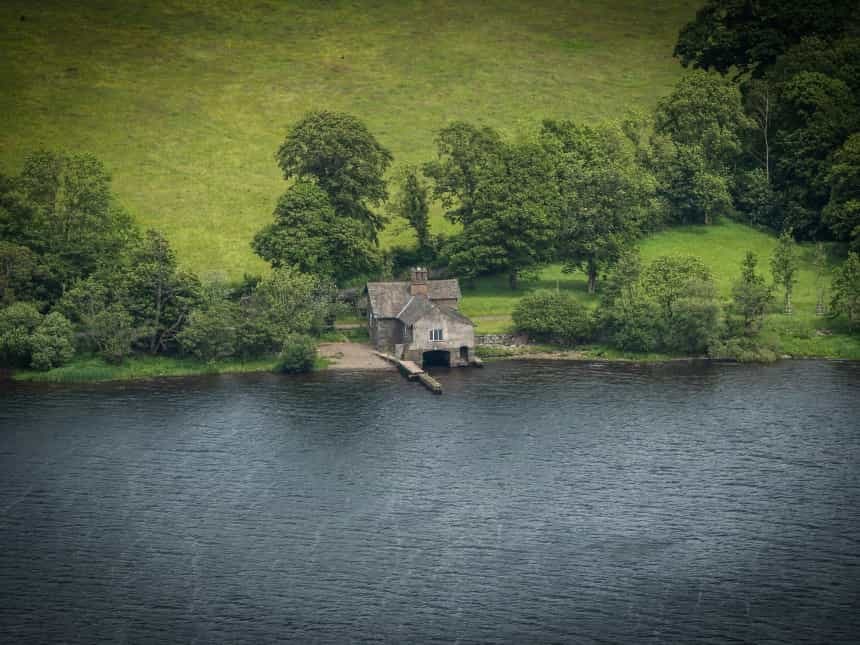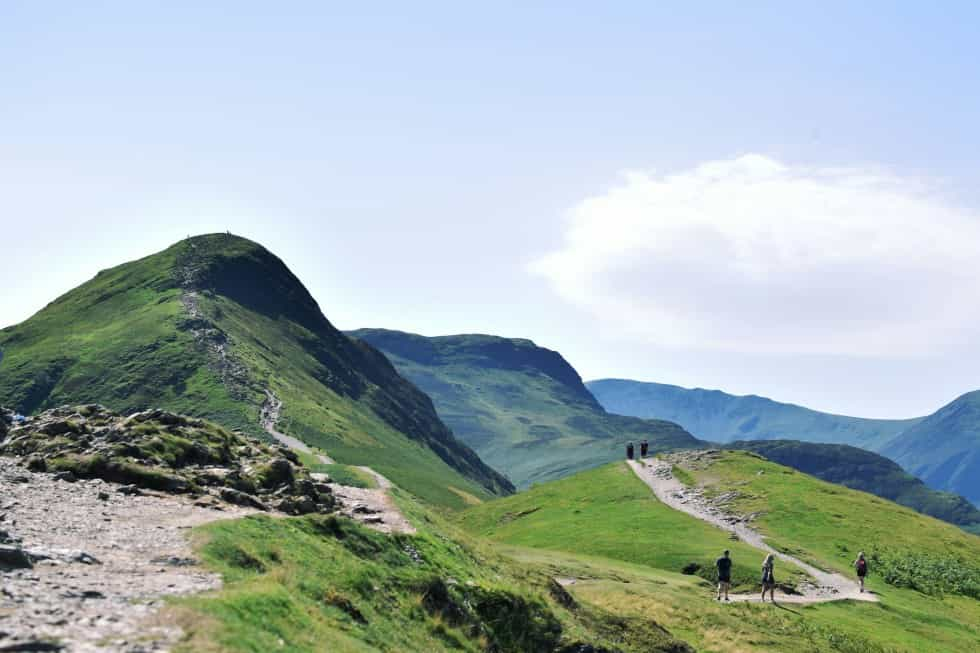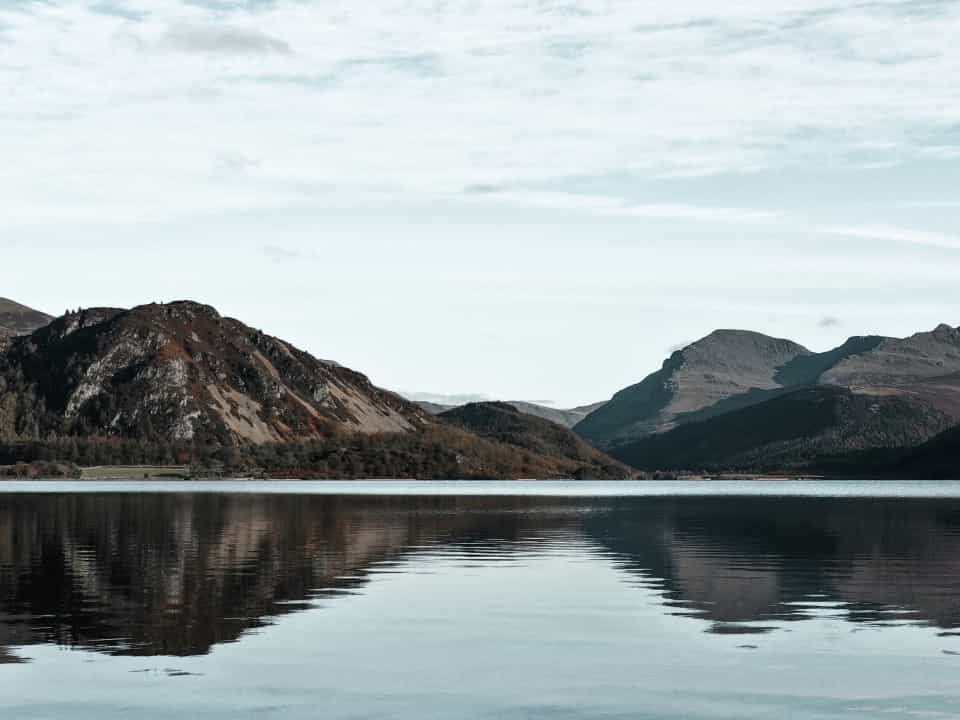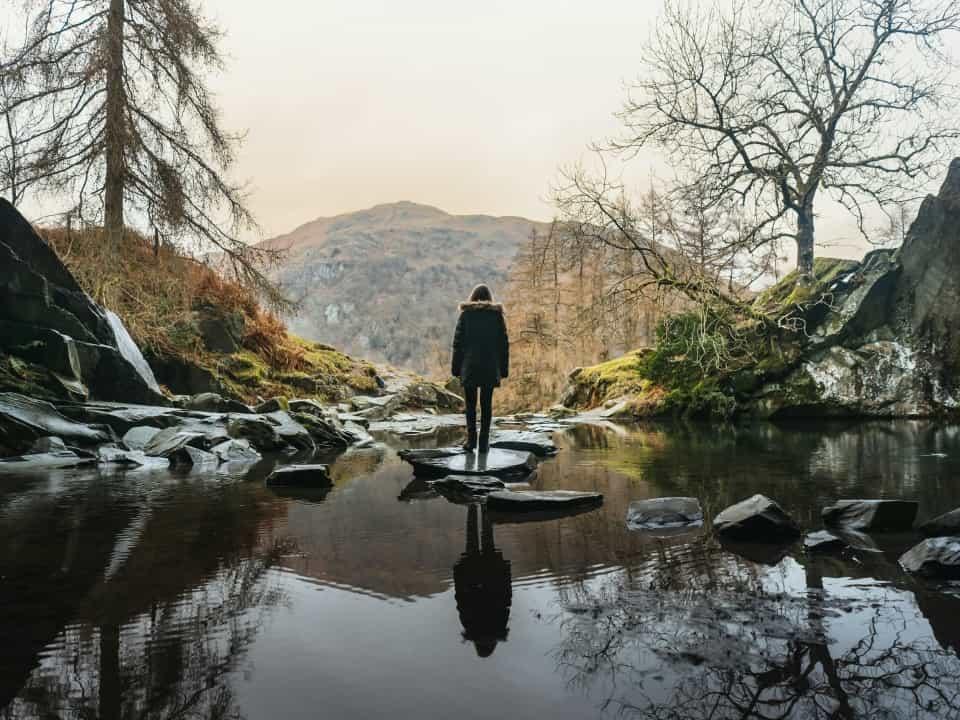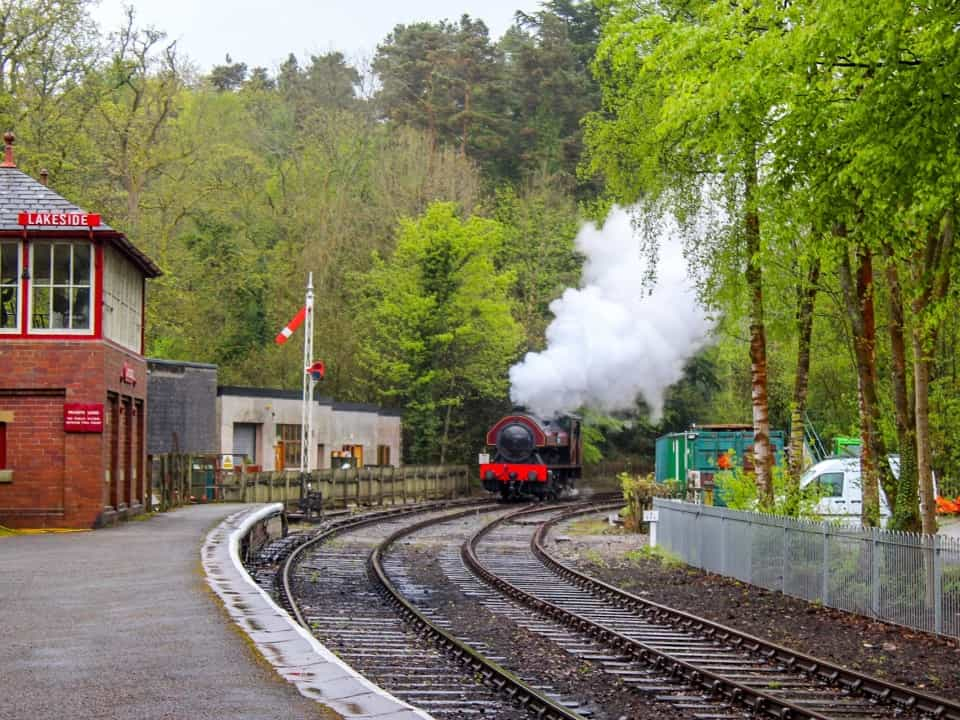Best Walks in the Lake District
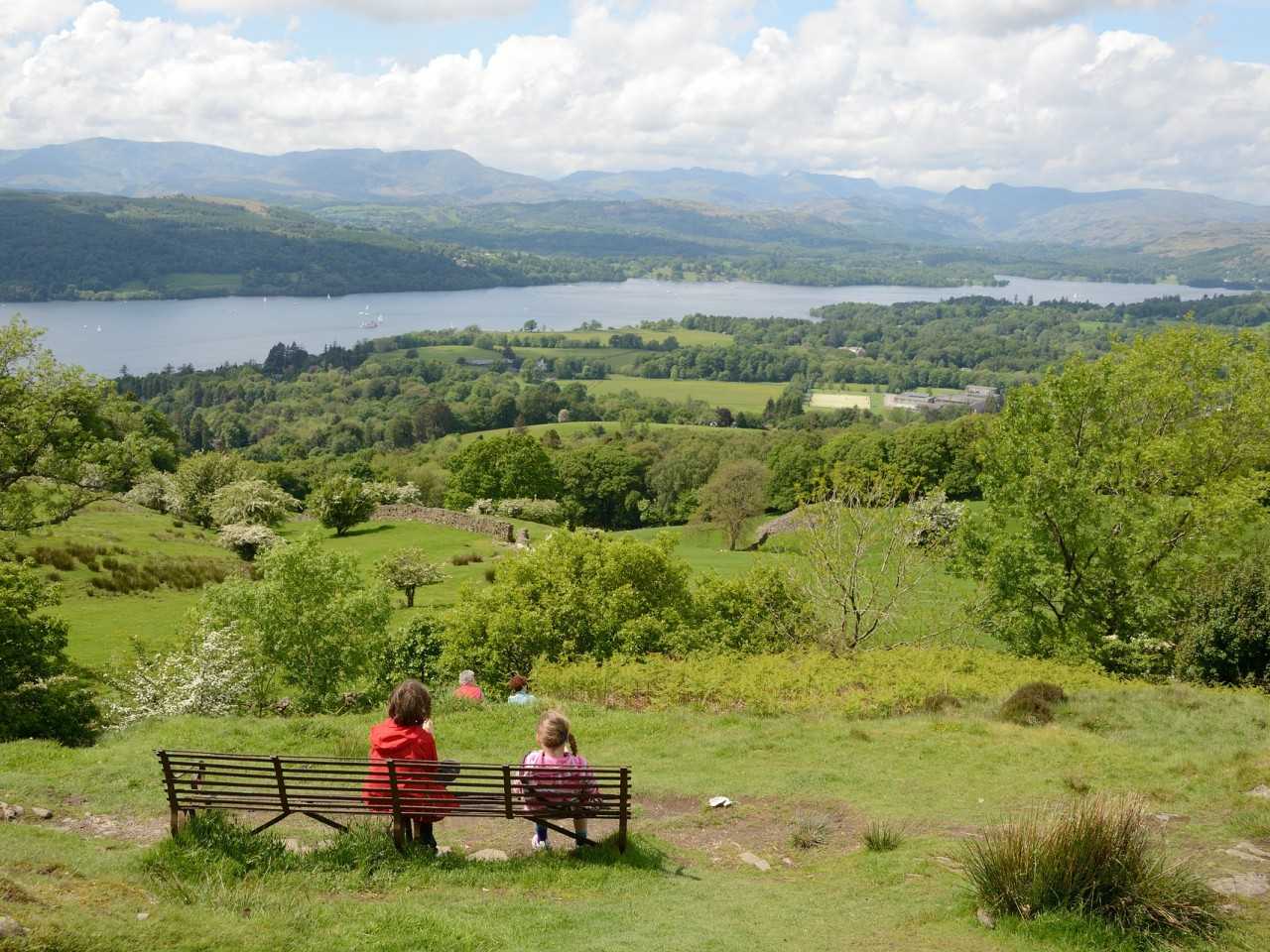
Set in the wild north-west corner of England, the Lake District is the country’s largest national park and – with more than 18 million visitors per year – its most popular. Home to 214 mountain peaks and 16 main bodies of water, the region is world famous for waterside walks and more challenging climbs in breathtaking untamed landscapes.
Here’s Pitchup’s guide to seven iconic Lake District walks. Some of these are more suitable for all the family, with manageable routes that should be achievable for children and pass through comparatively gentle terrain with plenty of spots to rest and tuck into a picnic.
The best walk in the Lake District
Singling out one Lake District walk from hundreds of options is always going to be subjective, but the breathtaking route from Howtown to Glenridding along the banks of Ullswater is certainly one of its most celebrated. Indeed, famed fell walker and author Alfred Wainwright agreed, calling it “the most beautiful and rewarding in Lakeland”.
Howtown to Glenridding
Length: 6.6 miles/10.6 km one way
Difficulty: Easy
Time: Around three hours
Start: Howton Pier
Route: OSMaps
Stretching along the southern shore of Ullswater, this beautiful and gentle meander has few steep inclines to worry about and is only accessible on foot or by steamer along the lake from Glenridding.
From Howton Pier, keep Ullswater on your right and follow the shoreline path signposted towards Patterdale with imposing Hallin Fell in the background. The route takes in Kailpot Crag before disappearing into woodland until it comes out at Sandwick Bay, a scenic picnic spot where you can also go wild swimming or paddling. From there, turn inland to spy Scalehow Force tumbling down the fellside into Ullswater, then follow the trail through Patterdale back into Glenridding.
Good to know: Factor in around half an hour for the steamer cruise back from Glenridding to Howton.
Other great walks in the Lake District
Cat Bells
Length: 3.5 miles/5.7km loop
Difficulty: Moderate
Time: Around three hours
Start: Hawse End Car Park
Route: Keswick.org
The well-loved route up Cat Bells snakes steeply up Skelgill Bank, levels out and then climbs again to the summit of the fell, where some scrambling is required – but nothing too taxing for those with older kids. Once at the top (1,480 feet/451 m), there are amazing views over peaceful Derwentwater to Skiddaw and Newlands Valley.
Good to know: From the summit, follow the path south and down steep stone steps to the Cat Bells Bridleway, which leads through woodland back to Hawse End.
Ennerdale Water
Length: 7.3 miles/11.7km loop
Difficulty: Moderately challenging at Anglers Crag
Time: Around four hours
Start: Bowness Knott Car Park or Bleach Green Car Park
Route: Where2Walk
One of the more remote lakes, Ennerdale Water provides wonderful fell panoramas from the well-marked path circumnavigating its shores. Pitchup recommends walking anti-clockwise, to get the rough, stoney terrain of Anglers Crag over early on. The remainder of the walk passes through farmland and along peaceful woodland tracks.
Good to know: Keep dogs under control as in summer there are often cows in fields at the north-west end of the lake.
Family-friendly walks
Not every lakeside footpath or track up a windswept fell is suitable for easily tired youngsters or pushchairs, so here are a couple of gentle Lake District walks that should inspire a deep love for the iconic landscapes of the region in all the family.
Rydal Caves
Length: 1.4 miles/2.25 km out and back
Difficulty: Easy
Time: About an hour
Start: Pelter Bridge Car Park
As recommended by Pitchup’s Emily Wymer, this short walk takes you up through woodland to the manmade Rydal Caves, in a former slate mine on Loughrigg Fell. The route up to the cave is well established, with a viewpoint over Rydal Water just above the treeline. Pack a family picnic to eat inside the caves; stepping stones lead through the water that lies on the ground to dry rocks where you can perch safely.
Good to know: There is a loose slate section on the path close to the caves, but nothing too strenuous for youngsters.
Tongue Pot
Length: 4.3 miles/6.9 km out and back
Difficulty: Easy
Time: Around two and a half hours
Start: Park on the verge at the foot of Hardknott Pass
Choose a sunny day and walk up to Tongue Pot in the secluded Eskdale Valley. The route through farmland is generally easy with fantastic fell views from the dirt path and no steep slopes to contend with, but it’s best for older children as the River Esk flows fast and the water is deep in the series of pools that line the route. Sitting next to an ancient packhorse bridge, Tongue Pot is the most dramatic of these pools, perfect for wild swimming and picnicking on its banks.
Good to know: Keen Pitchup walker Brodie Farrow says you reach Kail Pot first; it’s shallower than Tongue Pot and may be quieter if you want a refreshing dip.
Accessible walks
There are currently 50 designated accessible trails in the Lakes. Here are two family-friendly Miles without Stiles routes, chosen by Pitchup’s Accessibility and Sustainability Manager Holly Bland for their breathtaking scenery and easy access.
Latrigg
Length: 1.25 miles/2 km out and back
Difficulty: Easy
Time: A couple of hours
Start: Car park at the head of Gale Road
Latrigg is one of the lesser-known Lake District fells but it’s a fabulous family walk as you can take the short stroll from the car park or a longer option from Keswick (where the nearest refreshments are). You’ll be rewarded with amazing views of Lonscale Pike, Skiddaw and Blencathra on your way up, and panoramas over Derwentwater and Borrowdale from the bench on the plateau just under the summit.
Good to know: The path is made of compacted stone and there are no rocky scrambles to negotiate, but there is a steep slope at the beginning of the walk.
West Windermere Way
Length: About a mile/1.5 km out and back
Difficulty: Easy
Time: An hour and a half
Start point: Lakeside ferry terminal
Try this short section of the West Windermere Way between Lakeside and Newby Bridge after a visit to the Lakes Aquarium or a ride on the Lakeside and Haverthwaite Railway. The route is flat and follows boardwalk or tarmac pathways, with a scattering of benches for resting legs at scenic spots overlooking Gummer’s How. Information panels detail what to look out for, including huge oak trees, buzzards circling overhead and primroses in spring. There are refuelling stops, if needed, at either end of the walk.
Good to know: If you’re on the trail at dusk, there’s a chance of seeing bats flitting around in the gloaming.
Planning your walk in the Lake District
It’s always best to be prepared for any eventuality, especially when you are out and about exploring the Lake District with kids – the countryside may be spectacular but the weather is always unpredictable. And with access to 1,990 miles/3,200 km of rights of way in the national park, it’s important to know where you can – and cannot – legally roam.
How to dress for your walk
The temperature in the Lake District drops one degree for every 150 metres you ascend, so as far as clothing goes, layers are always your friend.
-
The weather can change rapidly, so wind- and waterproof jackets and over-trousers are invaluable – yes, even in summer – to go over T- shirts, jerseys and comfortable trousers/shorts in breathable fabrics.
-
In case of unexpected downpours, always carry an extra top layer, spare socks, woolly hats and gloves.
-
Wear waterproof walking boots to support ankles and keep feet dry when on muddy paths or crossing areas of peat bog.
-
If you’ve forgotten to bring something with you, you’ll be able to buy it at outdoor shops in Cumbrian towns like Keswick, Bowness-on-Windermere and Ambleside.
What to take with you
You won’t need much special equipment on walks in the Lake District, apart from a day pack with the following essentials:
-
Food and water to keep everyone hydrated and energy levels up
-
A charged mobile phone for GPS and to keep an eye on the time
-
Sun protection in summer
-
A camera/phone to capture the wonderful views
Where to park
There are car parks close to most popular walk locations across the region, all with dedicated spaces for Blue Badge holders. Card payments are not always possible due to the lack of wifi connectivity, so always have a few coins handy to pay parking fees.
Visiting the Lake District with your dog
You’re welcome to bring your dogs for walks in the Lake District. However – and this is a big however – the national park is also home to around three million sheep, half a million head of cattle and numerous endangered bird species.
This means you’ll always need to keep your dogs under close control, but please be extra vigilant in spring; hardy native sheep like Herdwicks (the ones with the shaggy grey coats) lamb from late March to May, and dogs worrying pregnant ewes can cause them to miscarry. Ground-nesting birds like curlews, lapwings, skylarks and grouse are also sitting on eggs or rearing chicks at this time; it’s important that they are not disturbed as adult birds may abandon the nests.
Control your dogs around horses as they are easily startled, and bear in mind that cattle often find dogs a threat. Please look after the Lake District’s wildlife by respecting the four-point Canine Code.
